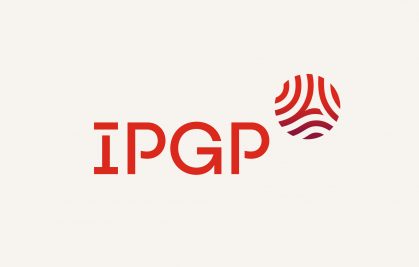Gustavo Madeira
Content / Work
Gustavo Madeira is Ph.D. in Physics and Astronomy, currently holding the position of Postdoctoral Researcher at the Institut de Physique du Globe in Paris. He works with the physics of planetary rings, circumplanetary disks, satellite formation, and the dynamic evolution of Solar System bodies. His specialty is the analytical development of orbital dynamics and numerical simulations. His main research topics are:- Satellite formation: accretion in circumplanetary disks, accretion in debris disks, pebble accretion, Galilean satellites, tidal evolution.
- Giant impacts: origin of Phobos and Deimos, origin of Moon.
- Minor impacts: dust production by impacts.
- Ring dynamics: stability and formation of planetary rings and arcs.
- Disturbing effects on minor bodies: solar radiation force, plasma drag, Lorentz forces, tidal effect, and Yarkovsky effects.
Media presence
Jornal da UNESP (in Portuguese): Article proposes a new hypothesis for the origin of the Galilean moons
Revista Veja (in Portuguese): NASA and European Space Agency's New Missions to Jupiter
Jornal da UNESP (in Portuguese): Research solves the mystery of the shape of the asteroid targeted in the first planetary defense experiment
Jornal do Estado de São Paulo (in Portuguese): Who is the Brazilian scientist who made a discovery about an asteroid and has been on NASA missions
Press releases
IPGP (in French): A model of asteroid formation validated by observations from the Lucy probe (NASA)
Icarus Journal: Some binary asteroids may form like Saturn’s inner moons
Exploring the recycling model of Phobos formation
Animations:
- Figure 4/Figure 6: Evolution of disk surface density (solid blue line, left scale) and satellite mass (black dots, right scale) as a function of distance to Mars (semimajor axis in Mars radius). Simulation time is given at the top, and vertical dashed lines show the location of rigid Roche Limit (1.74 Mars radius) and fluid Roche Limit (3.14 Mars radius). The simulation corresponds to a case with full destruction of Phobos, with initial disk mass being 1.1e4 masses of Phobos, particle size of 10 meters, and friction angle of 40 deg.
- Figure 11: Evolution of disk surface density (solid blue line, left scale) and satellite mass (black dots, right scale) as a function of distance to Mars (semimajor axis in Mars radius). Simulation time is given at the top, and vertical dashed lines show the location of rigid Roche Limit (1.74 Mars radius) and fluid Roche Limit (3.14 Mars radius). The simulation corresponds to a case with full destruction of Phobos and including Yarkovsky effects, with initial disk mass being 0.9e4 masses of Phobos, particle size of 0.1 meters, and friction angle of 25 deg.
- Figure 13: Evolution of disk surface density (solid blue line, left scale) and satellite mass (black dots, right scale) as a function of distance to Mars (semimajor axis in Mars radius). Simulation time is given at the top, and vertical dashed lines show the location of rigid Roche Limit (1.74 Mars radius) and fluid Roche Limit (3.14 Mars radius). The simulation corresponds to a case with tidal downsizing, with initial disk mass being 1.1e4 masses of Phobos, particle size of 10 meters, and friction angle of 40 deg.
Projects

ERC - METAL
Understanding the formation and early evolution of terrestrial planets is one of the most important goals of science. The objectives of METAL (Making ...
Publications
Madeira Gustavo, Charnoz Sebastien, Rambaux Nicolas, Robutel Philippe. Long-term dust dynamics in Didymos and Dimorphos system: Production, stability, and transport. Icarus, Elsevier, 07 February 2024, 412. <10.1016/j.icarus.2024.115997>
Madeira Gustavo, Charnoz Sebastien. Revisiting Dimorphos formation: A pyramidal regime perspective and application to Dinkinesh’s satellite. Icarus, Elsevier, February 2024, 409. <10.1016/j.icarus.2023.115871>
Madeira Gustavo, Charnoz Sébastien, Hyodo Ryuki. Dynamical origin of Dimorphos from fast spinning Didymos. Icarus, Elsevier, April 2023, 394. <10.1016/j.icarus.2023.115428>
Madeira Gustavo, Charnoz Sébastien, Zhang Yun, Hyodo Ryuki, Michel Patrick, Genda Hidenori, Giuliatti Winter Silvia. Exploring the Recycling Model of Phobos Formation: Rubble-pile Satellites*. The Astronomical Journal, American Astronomical Society, 15 March 2023, 165. <10.3847/1538-3881/acbf53>
Madeira Gustavo, Giuliatti Winter Silvia. Numerical analysis of processes for the formation of moonlets confining the arcs of Neptune. Monthly Notices of the Royal Astronomical Society, Oxford University Press (OUP): Policy P - Oxford Open Option A, 2022. <10.1093/mnras/stac944>
Hyodo Ryuki, Genda Hidenori, Sekiguchi Ryosuke, Madeira Gustavo, Charnoz Sébastien. Challenges in Forming Phobos and Deimos Directly from a Splitting of an Ancestral Single Moon. The Planetary Science Journal, 2022, 3. <10.3847/PSJ/ac88d2>
Madeira G., Giuliatti Winter S. M., Ribeiro T., Winter O. C.. Dynamics around non-spherical symmetric bodies - I. The case of a spherical body with mass anomaly. Monthly Notices of the Royal Astronomical Society, Oxford University Press (OUP): Policy P - Oxford Open Option A, 2022, 510. <10.1093/mnras/stab3552>
Madeira Gustavo, Izidoro André, Giuliatti Winter Silvia. Building the Galilean moons system via pebble accretion and migration: a primordial resonant chain. Monthly Notices of the Royal Astronomical Society, Oxford University Press (OUP): Policy P - Oxford Open Option A, 27 June 2021, 504. <10.1093/mnras/stab986>
Muñoz-Gutiérrez Marco A., Granados Contreras A. P., Madeira Gustavo, A'Hearn Joseph A., Winter Silvia Giuliatti. Long-term dynamical evolution of pallene (Saturn XXXIII) and its diffuse, dusty ring. Monthly Notices of the Royal Astronomical Society, Oxford University Press (OUP): Policy P - Oxford Open Option A, 2021. <10.1093/mnras/stab3627>
Giuliatti Winter S, Madeira G, Sfair R. Neptune’s ring arcs confined by coorbital satellites: dust orbital evolution through solar radiation. Monthly Notices of the Royal Astronomical Society, Oxford University Press (OUP): Policy P - Oxford Open Option A, 21 July 2020, 496. <10.1093/mnras/staa1519>
Madeira G., Giuliatti Winter S.. Effects of immersed moonlets in the ring arc particles of Saturn. The European Physical Journal. Special Topics, EDP Sciences / Springer Verlag, May 2020, 229. <10.1140/epjst/e2020-900129-5>
Gaslac Gallardo D., Giuliatti Winter S., Madeira G., Muñoz-Gutiérrez M.. Analysing the region of the rings and small satellites of Neptune. Astrophysics and Space Science, Springer Verlag, January 2020, 365. <10.1007/s10509-019-3717-7>




